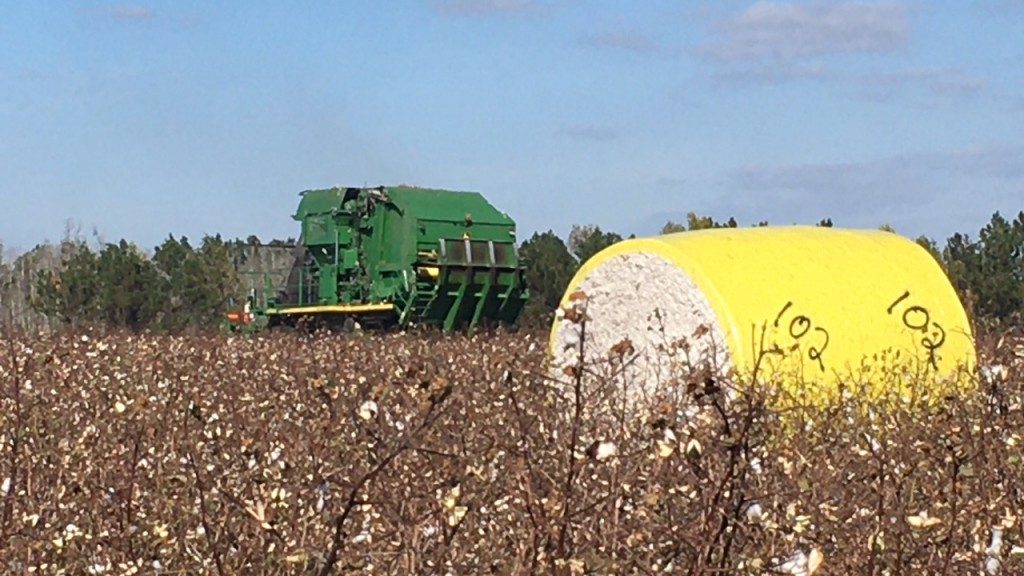Up Coming Events: Colquitt County Cotton Defoliation and Peanut Maturity update will be held on Wednesday, August 30, 2023. This meeting will start at noon and will be held at the Colquitt County Extension Office. Drs. Monfort and Hand will be the keynote speakers. Call the office at 229-616-7455 if you are interested in attending.
Colquitt County Hull Scrape Clinics: The Colquitt County Cooperative Extension will be offering peanut hull scrape clinics starting on Tuesday, September 5, 2023. The clinics will be offered every Tuesday, Wednesday and Thursday until the end of September from 8:30 am to 10 am at the Colquitt County Extension office. If you need samples done this week please give me a call.
Situation: The main concern this week will be the tropics. Pam Knox, UGA Climatologist, sent out a blog post Sunday am discussing the potential weather this week.
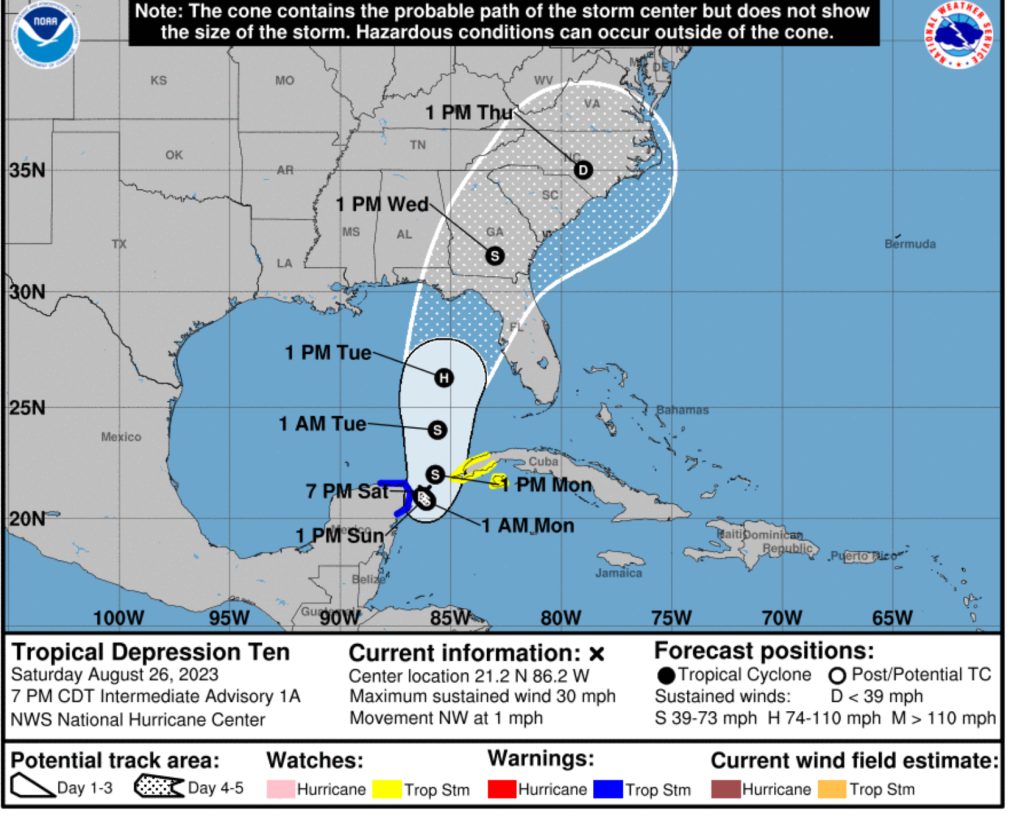
At 5 pm on Saturday the National Hurricane Center designated the tropical low pressure center in the southern Gulf to be Tropical Depression 10, which signals that there is a closed circulation and starts the process of producing forecast maps for the storm. It is expected to become Tropical Storm Idalia as soon as they find tropical-storm-force winds in the storm. The forecast cone is currently showing the storm to move very slowly over the Gulf with little movement for the next day and then it will start to move to the north over the very warm water of the eastern Gulf of Mexico. It could make landfall somewhere along the Florida Panhandle or northwest coast on Tuesday. However, this is highly uncertain at this point because the storm is not well developed so the models cannot do a good job of predicting where it will go. They are even worse at predicting how intense it will be. Some people speculate that a slow trip north over the Gulf could lead to rapid intensification that would make the storm much stronger, but there is also some wind shear at high elevations that could prevent that from happening. It is unlikely to be as strong as Hurricane Michael, fortunately. READ MORE
How do I get my peanuts checked for maturity? First contact your local county Extension agent, they will have the necessary things such as pressure washer and hull scrape maturity board to do this assessment. Growers need to remember that a good sample is CRUCIAL in determining the proper time to dig. A peanut hull scrape maturity check will be as accurate as the sample that you take. Pull or dig up at least 5 to 6 adjacent plants from at least three representative parts of a field which can be dug in on day. Keep these samples from each area of the field separate. Pick ALL the peanuts off the plants until you get around 200 peanuts (a sample should have between 180 and 220 peanut pods). Pick the vine clean. Sample size can influence the results so please do not bring a 5 gallon bucket of peanuts. If it will be a while before you can bring the sample, then pick off the sample and keep the peanuts in a bucket of water to keep them fresh. I have done a few samples over the last couple of weeks, and there seems to be variability in the maturity due to the cooler June and stressful August that we have experienced. Maturities on some April-planted Georgia 06G have ranged from 137 to a little over 140 days. As hull scrape clinics start, we will start to learn more about the maturity of the crop. If you have questions about peanut maturity, please contact your local county agent.
If you would like to learn more about the Peanut Hull Scrape method, please contact your local county Extension agent.
How is the potential weather going to affect disease management? Great question and Dr. Bob has mentioned a few points to consider below. The main thing you with peanut growers in your counties…. They already know they need get out ahead of the storm, but remind them again.
1. Consider putting out a fungicide application ahead of the storm to protect against leaf spot and white mold if it has been more than a week since their last application.
2. Winds and blowing rains will spread diseases in peanut, cotton, and soybeans.
3 Rains could keep growers out of fields for days; this is most important for peanut farmers.
4. We are in a critical period of the season- the peanut crop needs to be protected. Cotton and soybeans may also.
One of the guests on the latest edition of the podcast “All about the Pod”, was Dr. Tim Brenneman, UGA Plant Pathologist. He discussed some tips for managing white mold in peanuts which included spraying at night and timing the application of fungicides before rain. The question comes up about how far out in front of rain can I apply my white mold fungicide and still get activity on dryland. Dr. Brenneman mentioned research done in the past indicated applying up to about 4 days ahead of rain would help with white mold in a dryland situation. If you could get a rainfall event within 18 to 24 hours after applying fungicides that have activity on leaf spot and white mold would be great.
The question about how much rain or irrigation was needed to wash white mold fungicides into the crown of the plant came up at the Packer Park field day last week. Dr. Bob suggested 0.1 inches of rain to wash the fungicide into the crown.
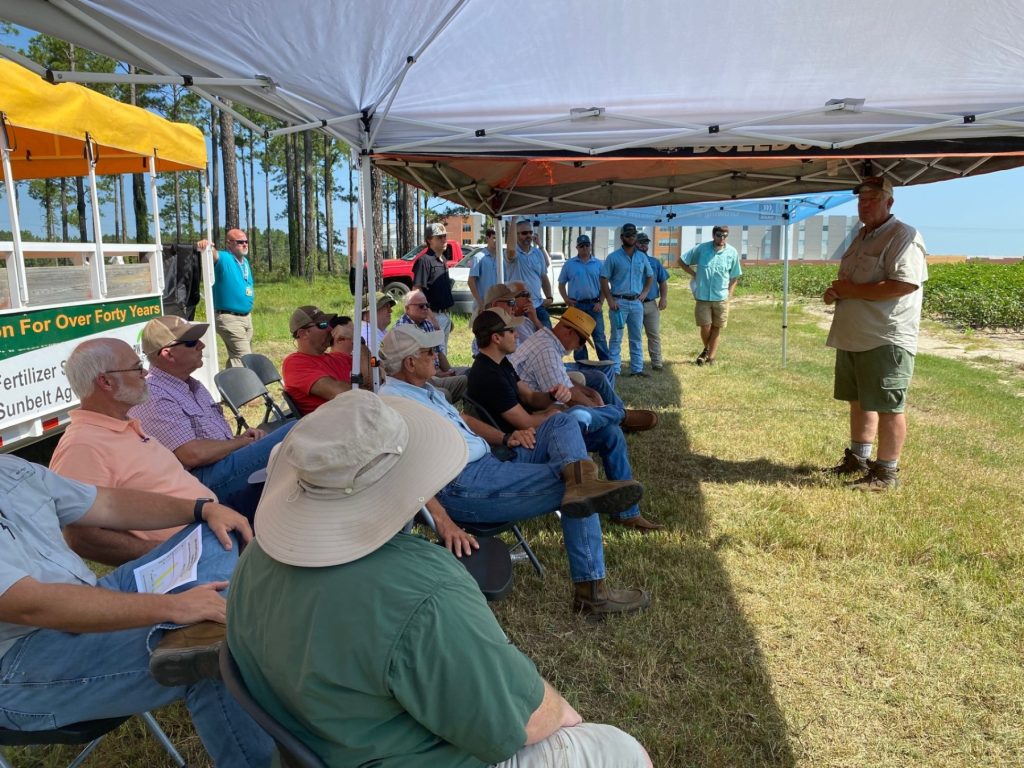
Peanut insect situation: Growers need to know what caterpillar pests are in the fields. In fields that I have been in this past week there has been velvetbean caterpillars and soybean looper. The treatment threshold for combined foliage feeders is 4–8 per foot of row depending on the size and condition of the peanut plants. Use a lower threshold for very young plants or plants that are stressed from other factors. Use a higher threshold for healthy plants with ample vine growth.
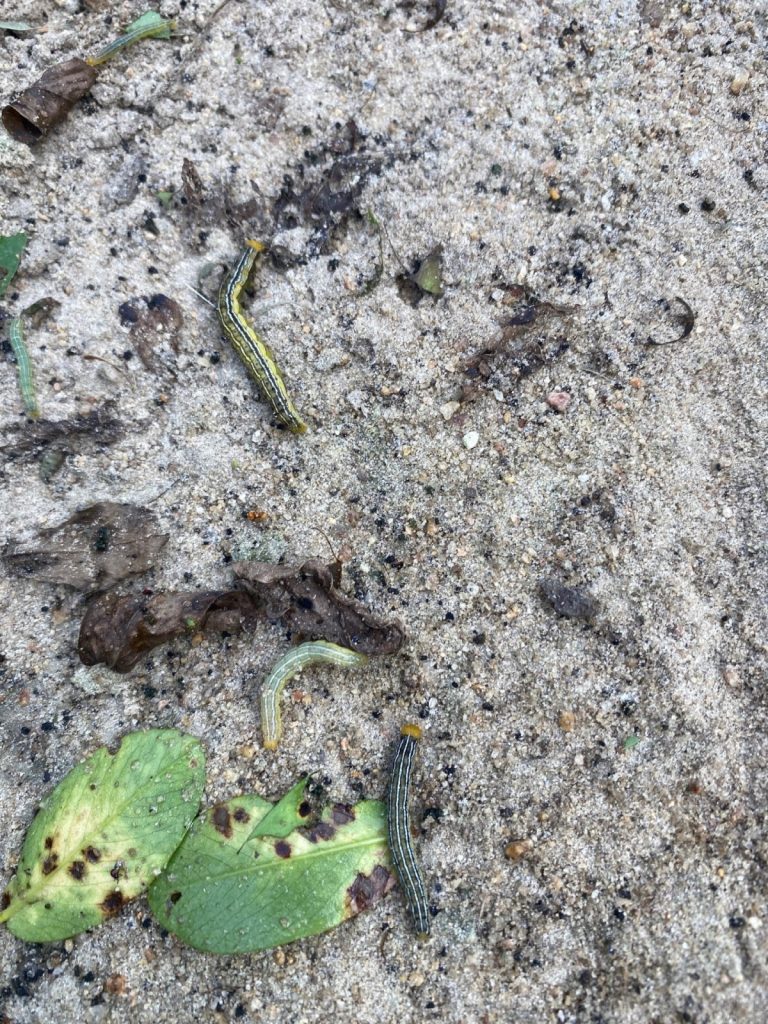
Peanut Irrigation: The water requirements for peanuts are below. The local peanut crop ranges from 90 days to close to 120 days.
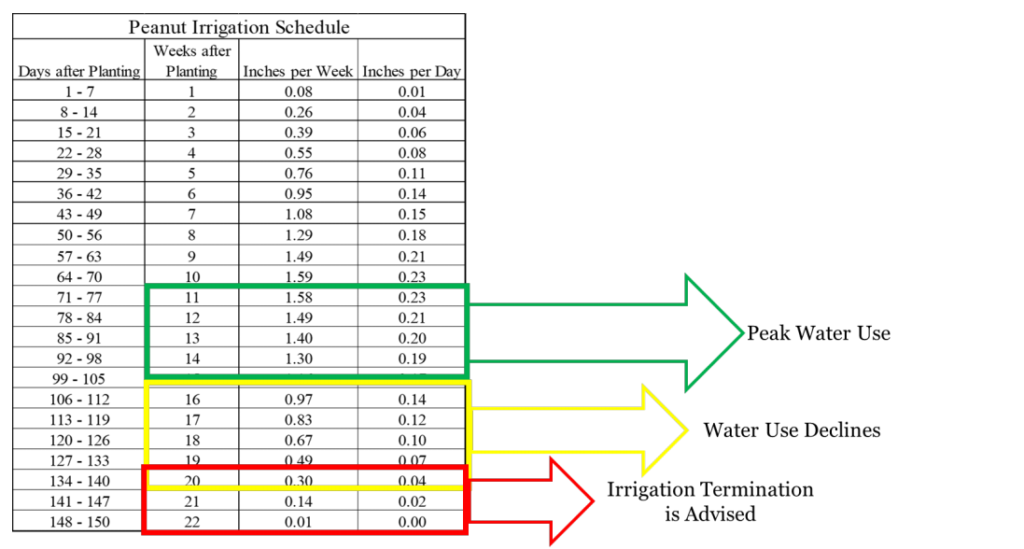
Cotton: White fly populations have been increasing over the last couple of week. Whiteflies need to be managed until defoliation. What about other pests in cotton? When can we terminate insecticide applications for stinkbugs and other pests?
Once the last boll population is determined the boll development or approximate boll age should be estimated. Depending on the insect pest, bolls are relatively safe from attack at varying stages of boll development. The table below is from the UGA Cotton Production guide. The table informs us the approximate boll age in days which bolls should be protected for selected insect pests. Cooler temperatures will slow plant development and subsequent boll age values may increase in such environments. It is assumed that the field is relatively insect pest free when the decision to terminate insecticide applications for a pest is made.
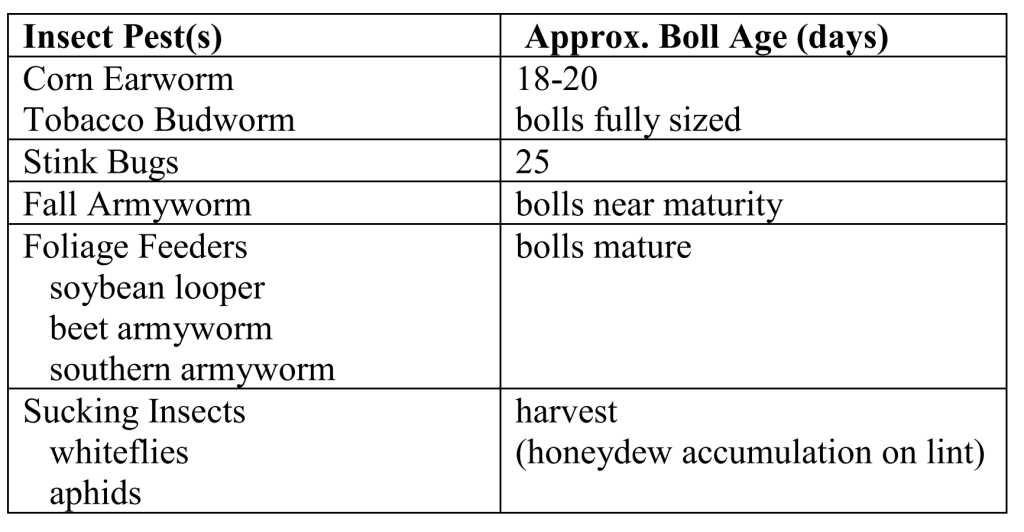
Lets be careful this week and please keep eye on the tropics. If you have questions please contact you local county Extension agent.
Have a great week.
Jeremy M. Kichler
Colquitt County Extension Coordinator
The University of Georgia Cooperative Extension does not endorse or guarantee the performance of any products mentioned in this update.
